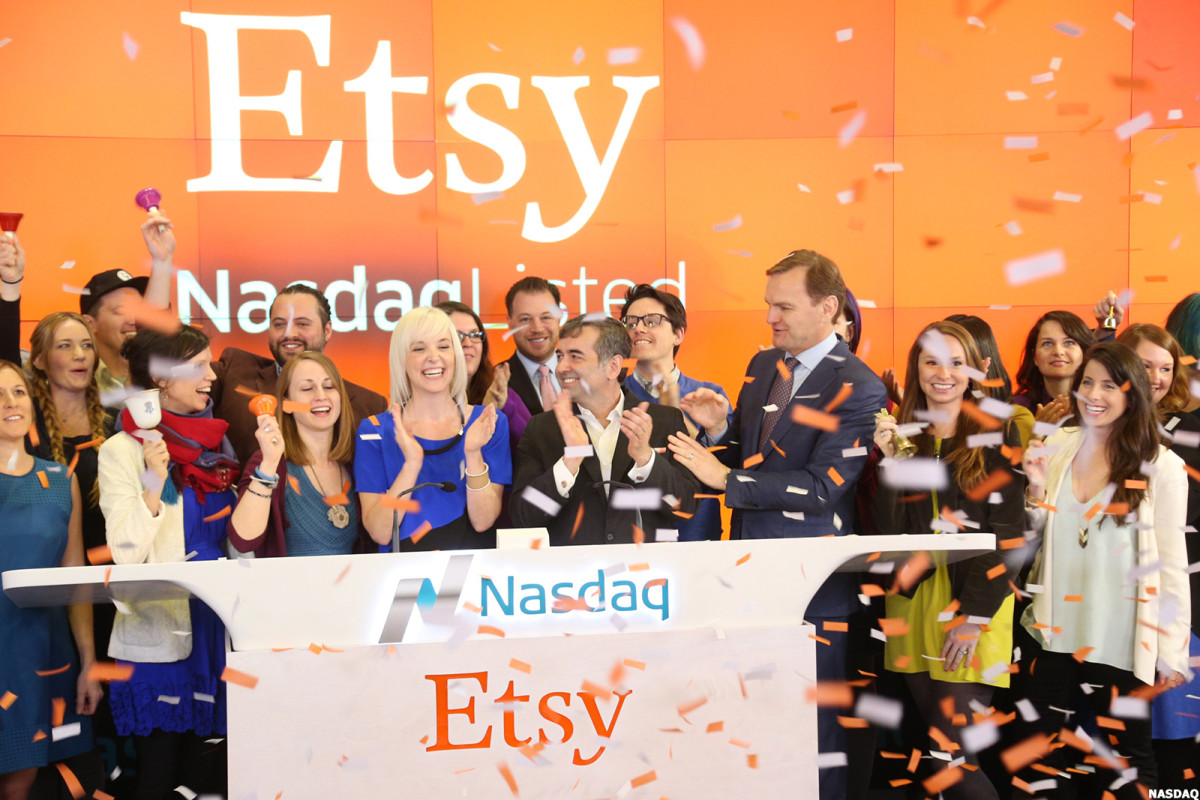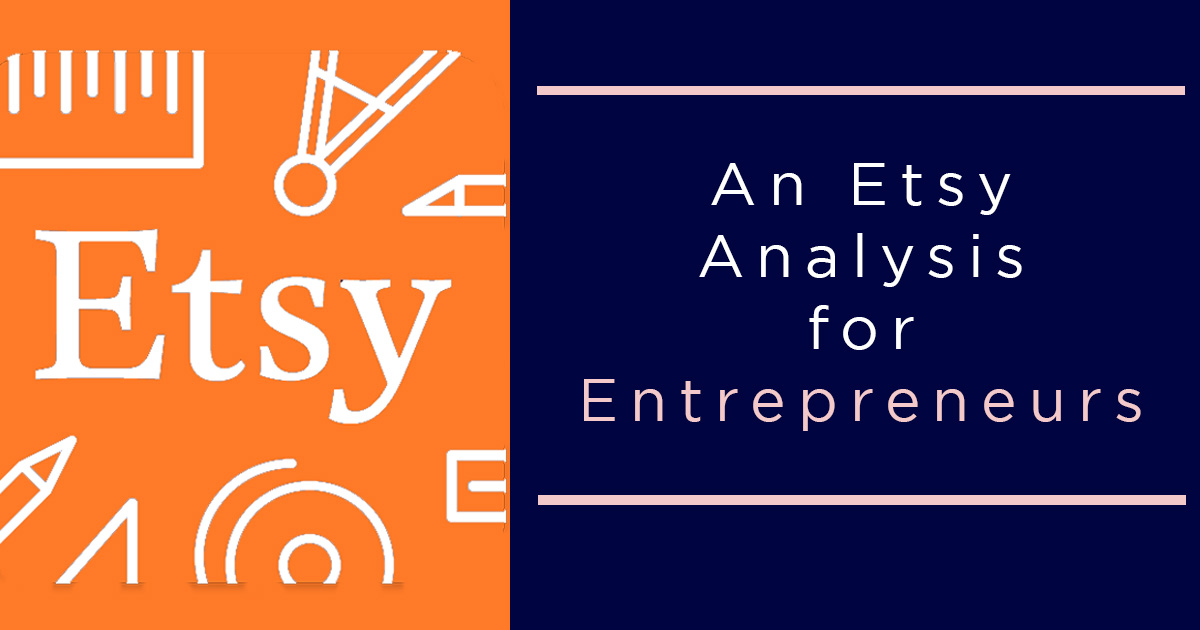You may think of Etsy as a wonderful platform for those wanting to support and start small businesses, but there is definitely more at play here. At the end of the day, Etsy is still a business, and they have to keep their investors’ best interests in mind, over that of the shop owners who depend on them. If you read up on their current trading prices, you’ll realize how much the company has really changed since going public on the stock market and their increasing fees on sellers in order to turn larger profits. When the company launched in 2005, it was the first online marketplace for independent sellers to easily sell their products without being placed next to cheaper alternatives, such as on Amazon or Ebay. At the time, online shopping was still seen as risky, and sellers had a hard time finding a place to sell, and be taken seriously. Rob Kalin, Chris Maguire, and Haim Schoppik wanted to change this, and created Etsy! Their vision was to create an idyllic online business space that would function as an online platform for individuals selling home-made goods.
By 2007, Etsy had nearly 450,000 registered sellers who generated $26 million in annual sales and raised over $3M in venture funding. Although receiving so much funding seems like a dream it’s a very double edged sword, the New York Times says it perfectly “Venture capitalists poured some $85 million into the company, making a takeover or initial public offering all but inevitable.”
Raising venture capital is a good way to secure funding and get your idea or business off the ground running, but it also puts an incredible amount of debt and stress on you as an entrepreneur. By 2008, only Rob Kalin of Etsy’s 3 Founders, stuck with the company, until being replaced by the Board with Chad Dickerson (then CTO) in 2011. Under his leadership the company grew dramatically, became a publicly traded company, and began to see sales in billions of dollars.

While this sounds like good news for Etsy’s investors, as an entrepreneur or small business, you can see where the growth of the company was also it’s death. None of the original Founders remain in the business, and their idea for the business has been completely overtaken. Now let’s see how these changes affected the most important part of the business, it’s users. None of the original Founders remain in the business, and their idea for the business has been completely overtaken. Now let’s see how these changes affected the most important part of the business, it’s users.
Selling on Etsy and turning a profit became more difficult, as Etsy’s mission evolved to be geared towards profits instead of users, larger cuts were taken out of sellers’ profits. They launched various new features that were made to be more helpful at the expense of its users. There are countless Etsy sellers who have taken to their personal blogs to voice their concerns. One such blogger explains how over the 7 years she’s been at Etsy she’s now making less money as competition rose, fees increased, and rules changed. As more sellers joined the market, some were bound to lower prices in an attempt to make up for lower profit margins with sales volume, therefore prices fell across the marketplace. While having such a large audience seems good for sellers, it’s turned into the opposite. A large audience of buyers was followed by more sellers and with the volume of listings now available, it’s possible your listing won’t be seen on the first few pages even if it’s directly searched for.

Moreover, some of the tools Etsy now offers to help sellers and buyers have proven more harmful than helpful. For example, in 2019 Etsy notified sellers that they would be prioritizing those who offered free shipping, however this means sellers who want to be seen now have to eat the shipping costs, to increase their prices yet again to include shipping costs. (Read more about how this affected and angered sellers here) Why would Etsy do this? Because instead of thinking of Etsy as a marketplace business for others, they hoped to increase their bottom line by noting that customers are 20% more likely to buy something if offered free shipping.
However, in an article by The Verge, one seller pointed out how this doesn’t make sense for sellers at all, “Most of us are tiny businesses – we’re not Amazon or eBay, we can’t compete with “the rest of e-commerce” and it won’t make sense for all of us to absorb our shipping costs into the overall price,” Fuller says. “But Etsy will penalise us for that.”
Aside from the free shipping debacle, Etsy’s pricing structure has seen a lot of changes as well. They still offer their basic plan for free in which casual crafters can list items for the .20 cent fee, and be charged for services a la carte. However, they now have a plus plan, with more tools for sellers at a monthly fee, where they can pay extra for other tools as needed. Etsy has also started offering online advertising on behalf of it’s sellers, however it’s not free, or optional. If an ad with your item is clicked on, and purchased within 30 days Etsy will charge you for that ad. Large sellers on Etsy are unable to opt-out of this, meaning whether they like it or not they could be seeing even more Etsy charges.
After all this, you may be asking yourself what alternatives are out there, and the answer is: many! Although Etsy is still the easiest and most efficient way to get your business out there to test your product, it is not sustainable for your brand and it’s no longer the only place to test your product and entrepreneurial spirit. Thanks to the rise of sites like Shopify, Handmade at Amazon, Storenvy, IndieMade (and more) you can choose the platform that’s right for you. Do your research (which you are by reading blogs like this one) and make the decision that is best for your business.
Network and join entrepreneurial communities to learn from others firsthand what worked and didn’t work for them! For example, Amazon Handmade takes a whopping 15% commission, but it is the first place people go to shop. Storenvy and Shopify have relatively low rates but don’t aid in giving your business any exposure. As you grow your business and develop your brand, the tools that make Etsy such an easy set-up become your limits. You can put up your own profile pictures, and banners, but your url domain will be behind etsy.com, and Etsy takes the liberty of recommending products from other sellers when a potential customer has already clicked on your listing.

So what can we, as entrepreneurs and small business owners learn from this?
1.Don’t grow too fast
2.Do your research.
What was ultimately Etsy’s downfall was it’s reliance on venture capital funds without thinking of how taking these funds would ultimately affect their business decisions. In an interview with Vox, ex-CEO Ron Kilman admits how they accepted the funds without understanding the strings attached to accepting so many investors. If you’re not in the tech/software industry you probably won’t face these problems at this scale, but all entrepreneurs can stand to be a little picky when choosing who will help drive their business forward! If your business is your dream and passion, be careful when accepting funds from people who will then have a vested interest in how you run your business.






Leave A Comment